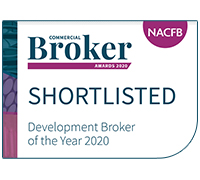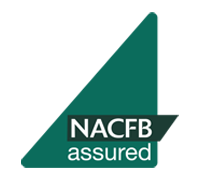Apply Online
Refurbishment Finance
If a property is in need of works, whether it be a simple modernisation, reconfiguration, extension or conversion, a Refurbishment Finance loan is appropriate.
What is Refurbishment Bridging Finance?
Traditional mortgage lenders require properties to be in good condition with all the necessary amenities before lending. If you are looking to purchase or refinance a property with no bathroom or kitchen, or in need of significant works before being habitable, or indeed if you are planning to carry out significant works, then bridging finance is utilised.
What is Refurbishment Finance used for?
This type of bridging loan is often categorised by the extent of works required, into “Light Refurbishment” and “Heavy Refurbishment” categories. Generally, heavy refurbishment involves a change of use or configuration of the building, perhaps requiring planning consent and/ or building regulations approval.
- Light Refurbishment
A light refurbishment project is where the property only requires small improvements, or cosmetic works to an existing structure. This may be as little as a cosmetic upgrade, but could also include a new bathroom and kitchen.
- Heavy Refurbishment
Heavy refurbishment involves some form of structural change, or a requirement for planning permission, or Building Regs sign-off, and also Permitted Development conversion projects. This can include adding an extension or a loft-conversion, or an internal re-configuration where walls are removed. If planning permission is required for any of the works, it is likely to be considered a heavy refurbishment.
We can arrange a facility to cover the cost of the works in addition to a percentage of the purchase price if a significant amount of works are required.
Refurbishment Finance is also sometimes known as Conversion Finance. This form of finance is usually another type of Short-Term Loan, or Bridging Finance.
A refurbishment loan is usually in 2 parts. The first part will be used to purchase the property, with the 2nd part being used for the refurbishment costs, and that in itself can be split into various “tranches”.
For example, if you had seen a property for sale at £200,000 in an auction, that could be worth £300,000 after spending £30,000 of refurbishment costs, the loan will work as follows:
Initial Advance of 70% of the purchase price, which gives £140,000
This would require a deposit of £60,000, with the lender providing £140,000 towards the purchase.
The refurbishment works start, and after a spend of £15,000 the lender sends out their asset manager to confirm the works have been done. Once this confirmation is received by the lender, they reimburse the £15,000. This process would be repeated for the 2nd£15,000 stage of works.
Typical Scenarios for Refurbishment Loans could include a Below Market Value purchase, due to the property condition, an Auction purchase, where the property is in need of renovation, purchasing and un-mortgageable property (no kitchen or bathroom), or also to raise funds to finish a property when the borrower has ran out of their own funds.
What are the Key Features of Refurbishment Finance?
Typically up to 75% (or even 80%) Loan to Value towards the purchase, then 100% of costs in arrears, subject to 70% of the finished value of the property.
100% funding available, with additional security
Interest rates from 0.4% per month
Loan Terms from 1 month to 24 months
Loans from £50,000 to £100m
Options with no Exit Fees
Rolled up, retained or deducted interest options available
Staged payment facilities available
What are the Refurbishment Finance lending criteria?
Applicants can be individuals, Sole Traders, Partnerships, Ltd Companies, LLPs and SPVs.
Light and Heavy Refurb Products available.
First and second charge lending.
Planning consent needs to be in place.
Loans with no PG’s available.
Lending in England, Scotland, Wales, Northern Ireland and Eire, and even selected European destinations.
Experience is not essential, but does allow access to cheaper rates.
Adverse credit can be considered if the exit strategy is via sale.
What information will I need to provide?
Borrowers details and company name (if applicable)
Property details
Borrowers CV’s/ Biographies to include any relevant experience
Schedule of works, and costs thereof
Proposed contractors/ builders’ details
Copy of planning consent, if applicable
Criteria Overview
- Cheapest rates guaranteed
- UP TO 75% LTV
- TERMS FROM 1 MONTH TO 2 YEARS
- ADVERSE CREDIT CONSIDERED
- LOANS FROM £30K TO £100M
- 1ST 2ND & 3RD CHARGES

Refurbishment calculator
Other Bridging Product Types
Quick Enquiry






























